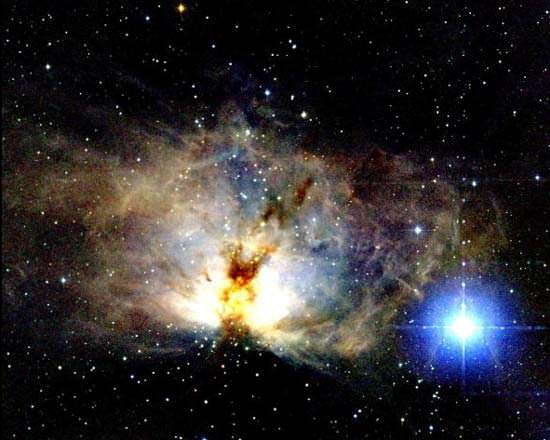[/caption] Astronomers have developed a method of classifying stars based on their color and some other characteristics. The star classifications are
O, B, A, F, G, K, M
(you can remember that with the handy mnemonic, "Oh be a fine girl, kiss me".)
O
stars are the most extreme group of all. They have the highest temperatures, the most luminosity, and the most mass (oh, and the shortest lives).
An
O
star appears blue to the eye, and can have a surface temperature of more than 41,000 Kelvin; its color would be better described as ultraviolet, but we can't see that color with our eyes. The surface temperature of an
O
star is so great that hydrogen on the surface of the star is completely ionized, but other elements are more visible, like Helium, Oxygen, Nitrogen, and Silicon.
O
stars are very massive and evolve very rapidly. Shortly after they form as a protostar, they already have the pressure and temperatures in their cores to begin hydrogen burning. The
O
stars light up their stellar nurseries with ultraviolet light and cause the clouds of nebula to glow. You can thank
O
stars for illuminating the beautiful nebula photographs captured by Hubble.
O
stars burn through their fuel quickly, and can detonate as supernovae in just a few million years.
Some
O
stars include Zeta Orionis, Zeta Puppis, Lambda Orionis, Delta Orionis.
We have written many articles about stars here on Universe Today. Here's
an article about an O star
.
If you'd like more information on stars, check out
Hubblesite's News Releases about Stars
, and here's the
stars and galaxies homepage
.
We have recorded several episodes of Astronomy Cast about stars. Here are two that you might find helpful:
Episode 12: Where Do Baby Stars Come From
, and
Episode 13: Where Do Stars Go When they Die
?
 Universe Today
Universe Today
